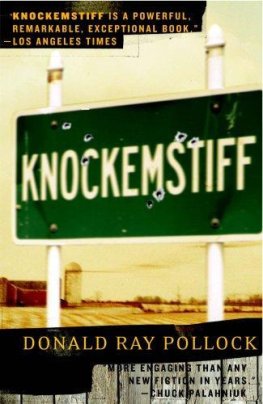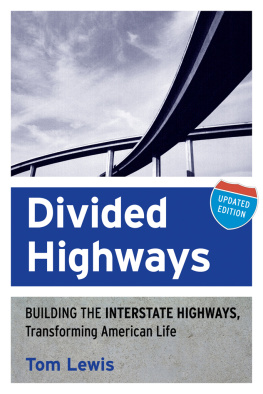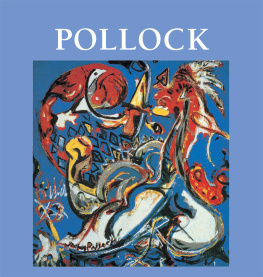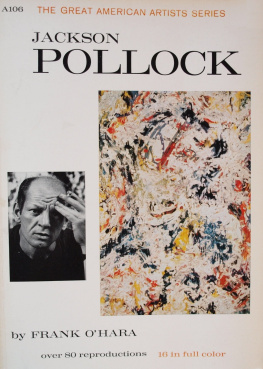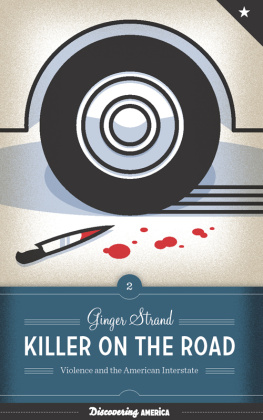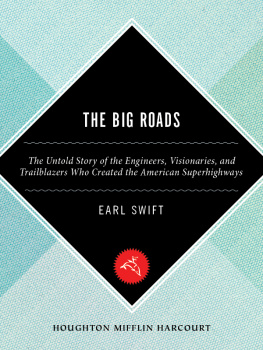

2015 by Riley Hanick
FIRST EDITION
All rights reserved.
No part of this book may be reproduced without written permission of the publisher.
Please direct inquiries to:
Managing Editor
Sarabande Books, Inc.
2234 Dundee Road, Suite 200
Louisville, KY 40205
Library of Congress Cataloging-in-Publication Data
Hanick, Riley, author.
Three kinds of motion : Kerouac, Pollock, and the making of American highways / an essay by Riley Hanick. First edition.
pages cm
1. Kerouac, Jack, 19221969Criticism and interpretation. 2. Pollock, Jackson, 19121956Criticism and interpretation. 3. Art and literatureUnited StatesHistory20th century. 4. Interstate Highway System. I. Title.
PS3521.E735Z666 2015
813'.54dc23
2014028106
eBook ISBN: 978-1-941411-05-6
Cover image by Ruokun Yi. Image provided courtesy of the artist.
Cover designed by Jonathan Graf.
Interior layout by Kirkby Gann Tittle.
Sarabande Books is a nonprofit literary organization.

The Kentucky Arts Council, the state arts agency, supports Sarabande Books with state tax dollars and federal funding from the National Endowment for the Arts.
Contents
O n the third week in January, upon lacquered concrete reflecting white light, in a plexiglass box measuring one foot by one foot by one hundred and twenty feet, transparent through five sides with black fabric on the sixth. Gently, with white felt gloves, they have laid it out complete. There will be two guards standing at the entryway. Each will clasp his hands in front of him and look ahead.
Jack Kerouac started speaking English at age six. At seventeen he wrote a mystery story for his high schools monthly journal and at twenty-five he stayed up for three weeks taking Benzedrine with coffee, clenching his jaw and writing a draft of On the Road on one scroll of paper. More than a half-century later, it is being displayed at the University of Iowa Museum of Art. It has come to us courtesy of Jim Irsay, who purchased the scroll for two million, four hundred and thirty thousand dollars. He also owns the Indianapolis Colts. In a few months the scroll will continue on to Orlando, Indianapolis, Austin, and Vegas. Were part of a thirteen-city tour.
It is ten in the morning and completely clear outside. He wakes and its as if it is there in the room like taut, even light on the wall, and his first thought of the day is that today he will be unable to begin.
1919. Ike at Camp Colt. Ike at Fort Benning. Ike at Camp Meade, bored with demobilizing troops. The federal government and the army are generally convinced of the need for better roads. Publicity is a good idea.
Ike selling the Seedling Mile. Ike in Stetson hat and green tunic. Ike in a two-mile convoy. Tire manufacturers, truck and auto companies, good road boosters. Among eighty-one military vehicles there is one small tank on a flatbed trailer. Also a blacksmith shop on wheels, a gasoline truck, a wrecker. A van pulling a three-million-candlepower searchlight. The U.S. Armys Transcontinental Convoy will take two months to slog from Washington to San Francisco, averaging around five miles per hour. Half of the roads are sand or mud, routes careening aimlessly, connecting by accident. A map of the highways would look like a scatter of snipped yarn ends, dissipating to the west.
It feels wrong for there not to be silence. Before you see the case or the guards, there is a mangle of sound that is nearly enough to keep you away. Walking down the empty hallway toward the museums new wing, Im given an impromptu mash-up of Koko and Subterranean Homesick Blues which quickly becomes a jubilant mumble of bright mud. There is a mix CD on repeat. There are film and video clips. Their accumulation is attempting to acknowledge our desire for context, while simultaneously enacting our desire that context be obliterated. I sit and listen and try to see it through. The clips recombine and contort and mostly their enthusiasms seem grotesque and deflated as they plow into one another.
The display case stretches from the gallery entrance to the north wall. Inside you can see it, tattered and mangled for the first few feet and then smooth, aged to a light beige, a yellow crust where tabs of scotch tape hold the sheets together. A display panel explains that the scroll does not appear to be Teletype paper, as Kerouac claimed, and that each twelve-foot strip had to be cut down to a width that would fit into a typewriter.
Also, to the right, before the hallway, on the hushed side of the white wall that stretches three-quarters of the way to the ceiling, in front of two black leather chairs with matching footstools: Please enjoy the most valuable object in Iowa. Commissioned in 1943 for Peggy Guggenheims entryway to her Manhattan townhouse, Jackson Pollocks Mural is eight feet by twenty feet. Four years later, she moved to Venice and it was given as a gift to the University of Iowa. People said she was sleeping with the museums future director. Its also said that while the museum was being completed the painting spent part of the winter in a barn, where birds shit on it. All apocryphal enough, though it has been acknowledged that for a short time the painting hung just beneath the rafters of the universitys library, where there were also, occasionally, birds.
1956. Ike emphasizes benefits to the economy, the need for security in evacuation, and the essential role of information unity. Estimates state that two-thirds of an urban population will be decimated in the event of a nuclear attack. In another war, Ike noticed the autobahn. He is generally opposed to advertising along the highway, but admits he rather likes reading the Burma-Shave signs to himself as he drives from Pennsylvania to Washington.
Horizon slips. Shadow and light tail each other insensibly. Nests freeze to branches. Outlines swell with snow. For Husserl, every experience points to further experiences that would fulfill and verify the appresented horizons. For appresented read: something like a prism. Something like a sprawling halo upon each thing, asking after every option, every angle and direction extending into diffusion. A prospect. Ether. The watering of a lawn. The radio relays new findings on increasing thickness and reflectivity in clouds. The term is global dimming, though from space we are, in fact, more luminous.
And there are other terms: auto-, a prefix embodying a capacity for propulsion, containment, and self-combustion in equal parts. Chief meanings include: (a) of oneself, ones own; (b) self-produced or induced (pathologically) within the body or organism; (c) spontaneous, self-acting, automatic. A line of cells. A player piano. A thing pressing out from the unseen, both source and effect, occurring without us; an opening somehow limned in.
Notice the remains of Roman roads. The viae, meaning way, but etymologically related to weight via the Indo-European root wegh-. One walks briskly, without thought, so that collapse is almost imperceptible.
Lines lengthen and recede at the right margin of the scroll, stair-stepping to the edge of the page, until the margin retracts to its starting point and begins again. As I walk the length of the case, I hear one guard talking to the other, asking if he has seen the part up here, near the top, about Des Moines.
Next page

